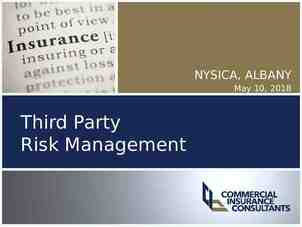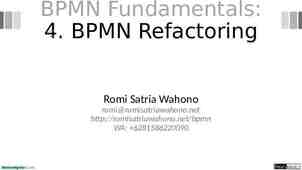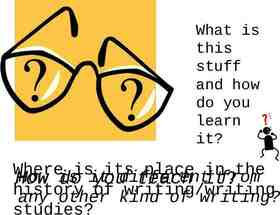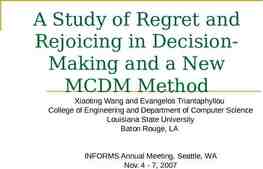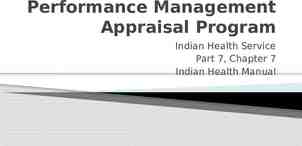Academic Integrity Matters learntocite.dmacc
17 Slides714.50 KB

Academic Integrity Matters http://learntocite.dmacc.edu

What is Academic Integrity? Expressing your ideas in your own words. Demonstrating your understanding and sharing your personal perspectives. Acknowledging others’ work and contributions. Respect for others, yourself and your college. http://learntocite.dmacc.edu

How does DMACC define academic dishonesty? 1. 2. Plagiarism Intentionally using another person’s writing/academic work and submitting it as your own. Failing to correctly cite another person’s writing/academic work. Falsification Falsifying an exam, paper, project, application, transcript or test using dishonest means or assisting another student to do so. http://learntocite.dmacc.edu

How does DMACC define academic dishonesty? (Continued) 3. 4. Unauthorized collaboration Using materials or collaborating with another person(s) during a test or other assignment without authorization. Substitution Substituting for another student, or permitting another person to substitute for oneself during an exam, course, or on other work. http://learntocite.dmacc.edu

How does DMACC define academic dishonesty? (Continued) 5. 6. Cheating The acquisition of grades, academic credits, degrees, honors, awards, certification, or professional endorsements by means of cheating. Failure to Comply Failing to comply with the policies of the student's program or department as stated in publications. http://learntocite.dmacc.edu

Examples of Academic Misconduct 1. 2. 3. 4. 5. Buying, stealing or borrowing a paper. Hiring or asking someone to complete coursework or take a test. Copying from another source without citing (intentionally or by accident). Cutting or pasting text or graphics from Internet sources without proper citation. Using the source too closely when paraphrasing without proper citation. SOURCE: www.library.dmacc.edu/PublicPages/Plagiarism.htm http://learntocite.dmacc.edu

Why does DMACC care about Academic Integrity? 98% of DMACC students work hard and expect the College to ensure others work hard too Students found responsible, face receiving failing grades which impact persistence rates and GPA’s Cheating devalues DMACC degrees http://learntocite.dmacc.edu

Document the following sources: Summaries, paraphrases, or direct quotations from a source Reprints of diagrams, illustrations, charts or pictures Little-known facts Other people's opinions Results of other people's research (opinion polls, case studies, statistics) Quotations or paraphrases from people you interview http://learntocite.dmacc.edu

Documentation is not required: Common knowledge (facts that can be found in many places and are likely to be known – Ex. The sun rises in the east.) Your own ideas, opinions, or conclusions Your own research (Unless it is published) http://learntocite.dmacc.edu

How to recognize plagiarism Here is the original text from an article in the March 2004 issue of Scientific American: Original: Over the past few million years the earth's climate has swung repeatedly between ice ages and warm interglacial periods. A 400,000-year record of temperature is preserved in the Antarctic ice sheet, which, except for coastal fringes, escaped melting even in the warmest interglacial periods. This record suggests that the present interglacial period (the Holocene), now about 12,000 years old, is already long of tooth. (Hansen 70) http://learntocite.dmacc.edu

Plagiarism Example 1: According to Hansen, the record suggests that the present interglacial period (the Holocene), now about 12,000 years old, is already long of tooth (70). Why is it plagiarism? Even though the information source is documented, this is plagiarism because the writer didn't indicate that a phrase was borrowed word-for-word. To correct the problem, enclose the borrowed words in quotation marks. Acceptable: According to Hansen, the "record suggests that the present interglacial period (the Holocene), now about 12,000 years old, is already long of tooth" (70). http://learntocite.dmacc.edu

Plagiarism Example 2: Over the past few millennia, the climate of the earth has swung back and forth between ice ages and warm periods. The record of temperature preserved in the Antarctic ice sheet suggests that our current warm period is already long in the tooth. Why is it plagiarism? This is plagiarism because the writer has only changed a few words or phrases, and the writer has also failed to cite a source for any of the ideas or facts. Two acceptable texts, one using a paraphrase and the other using a combination of paraphrase and direct quotation, are shown below. Acceptable: Studies of the Antarctic ice sheet show that earth's climate has cycled between ice ages and warm periods and back again over time, and that our current warm period has already lasted longer than usual (Hansen 70). Acceptable: By studying the Antarctic ice sheet, scientists have determined that "the earth's climate has swung repeatedly between ice ages and warm interglacial periods" and that our current warm period has already lasted longer than usual (Hansen 70). http://learntocite.dmacc.edu

Techniques to Avoid Plagiarism Record relevant documentation information (i.e. author, page number, etc.) in your notes accurately and completely. Indicate in your notes which ideas (emphasis) are taken from sources and which are your own thoughts or insights. Be sure to keep this distinction clear in your paper. Put all words borrowed from sources inside quotation marks. In your notes, you might want to circle the quotation marks so you'll be sure to include them in your paper. When paraphrasing or summarizing information from a source, use different words and sentence structures than the original text. Remember - a citation is still required! http://learntocite.dmacc.edu

Writing Tips: Reread your source until you understand it. 2. Write your paraphrase or summary without looking at the original text, using your own words and phrasing. 3. Next, check your version with the original. 4. Make corrections for clarity, accuracy, and mistakenly borrowed phrases. * Remember to provide citations to paraphrased (as well as directly quoted) materials! 1. http://learntocite.dmacc.edu

How to evaluate an academic source Authority: Who created the resource? Is the author, publisher, and/or producer reputable? Accuracy: Is the information reliable? Can factual information be verified in another source? Purpose: Can you detect any bias in the content or presentation of the information? What is the purpose of the publication? Is it informative or persuasive? Scope: Is the coverage of the topic appropriate for your needs? Currency: Does currency matter for your topic? Can you find / verify the date of the material? http://learntocite.dmacc.edu

DMACC Resources Academic Integrity at DMACC http://learntocite.dmacc.edu Library Research & Writing Guides http://www.library.dmacc.edu/PublicPages/ResearchWritingGu ides.htm MLA Documentation Guide http://www.library.dmacc.edu/PublicPages/MLADocumentatio n.pdf APA Documentation Guide http://www.library.dmacc.edu/PublicPages/ APADocumentation.pdf DMACC Academic Misconduct Procedure www.dmacc.edu/handbook/polprocedures/es4670.pdf http://learntocite.dmacc.edu

Resources Lipson, Charles. Doing honest work in college - how to prepare citations, avoid plagiarism, and achieve real academic success. Chicago: University of Chicago Press, 2004. (DMACC Library call number: PN171 F56 L56 2004) Caught cheating. ABC News Productions. ABC News. 2004 (DMACC Library call number: LB3609 C38 2004) Lanthrop, Ann and Kathleen E. Foss. Guiding students from cheating and plagiarism to honesty and integrity: strategies for change. Westport, CT: Libraries Unlimted, 2005) http://learntocite.dmacc.edu


